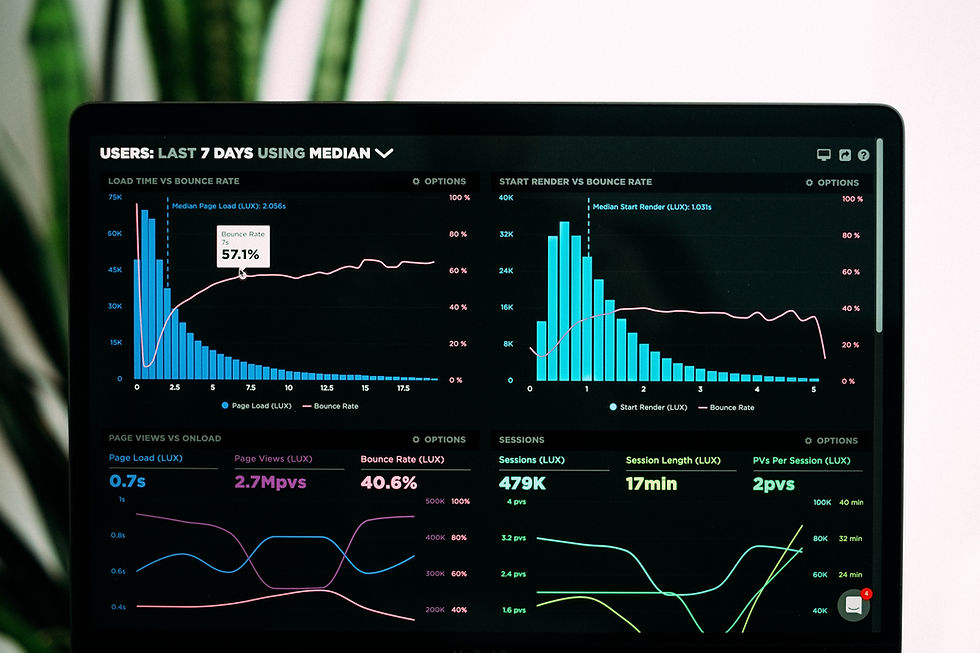Industry Analysis for Stock Research: A Comprehensive Guide
Introduction
Industry analysis plays a crucial role in stock research, providing valuable insights into the dynamics, trends, and competitive landscape of a specific sector. By understanding the broader industry context, investors can make informed decisions and identify potential investment opportunities. In this comprehensive guide, we will delve into the key components of industry analysis and how to conduct a thorough assessment. By mastering industry analysis, you can gain a competitive edge in stock research and enhance your investment strategy.

I. Understanding Industry Analysis
Industry analysis involves examining the economic, competitive, and regulatory factors that influence a particular sector. It provides insights into the opportunities, threats, and growth prospects within the industry. The following components are essential for comprehensive industry analysis:
Industry Definition and Classification: Define the industry you are analyzing and understand its boundaries. Industries can be classified based on various factors, such as products, services, markets, or technologies. Clarifying the scope of the industry is crucial for conducting an accurate analysis.
Industry Size and Growth Rate: Assess the size of the industry in terms of revenue, market capitalization, or other relevant metrics. Understand the historical growth rate and forecasted trends to identify potential opportunities and assess the industry's attractiveness.
Market Segmentation: Identify and analyze the different segments within the industry. This involves categorizing the market based on customer needs, product types, geographic regions, or any other relevant factors. Understanding market segmentation helps assess market trends and identify target areas for investment.
II. Analyzing Industry Structure
Analyzing the structure of the industry helps identify the key players, competitive dynamics, and barriers to entry.
Competitive Landscape: Identify the major competitors within the industry and understand their market share, strengths, and weaknesses. Analyze their pricing strategies, product differentiation, and competitive advantages. Consider factors such as market concentration, industry consolidation, and potential disruptors.
Barriers to Entry: Assess the barriers that may prevent new entrants from easily competing within the industry. These barriers can include high capital requirements, economies of scale, intellectual property protection, regulatory hurdles, or established distribution networks. Understanding barriers to entry helps evaluate the competitive intensity within the industry.
Substitutes and Complementary Products: Identify potential substitutes or complementary products that may impact the industry's growth and profitability. Analyze the threats posed by alternative solutions or technologies that may disrupt the current market landscape. Consider factors such as changing consumer preferences, technological advancements, and emerging trends.
III. Industry Trends and Drivers
Identifying and understanding the key industry trends and drivers is crucial for assessing the prospects of the industry and its companies.
Technological Advancements: Analyze the impact of technological developments on the industry. Identify emerging technologies, innovation trends, and potential disruptions. Consider how technology is changing customer preferences, product offerings, production processes, and distribution channels.
Regulatory Environment: Assess the regulatory landscape and its impact on the industry. Understand the current and potential future regulations that may affect operations, pricing, or market entry. Consider industry-specific regulations, government policies, and potential legal risks.
Economic Factors: Evaluate the broader economic conditions that impact the industry. Consider factors such as GDP growth, inflation rates, interest rates, and consumer spending patterns. Understanding the industry's sensitivity to economic cycles helps assess its resilience and potential risks.
IV. Key Industry Stakeholders
Identifying and analyzing the key stakeholders within the industry provides insights into their influence and potential impact.
Customers and Market Trends: Understand the needs, preferences, and behaviors of customers within the industry. Analyze customer segments, demographics, purchasing power, and changing consumption patterns. Identify market trends and shifting demand that may impact the industry.
Suppliers and Supply Chain Dynamics: Assess the suppliers within the industry and their influence on pricing, quality, and availability. Understand the supply chain dynamics, potential bottlenecks, and risks related to sourcing raw materials, components, or services.
Government and Regulatory Bodies: Evaluate the role of government and regulatory bodies within the industry. Understand their influence on policies, licensing requirements, trade agreements, and environmental regulations. Monitor potential changes in regulations that may impact the industry's profitability and operations.
V. Industry Lifecycle and Competitive Forces
Analyzing the industry lifecycle and competitive forces helps assess the industry's maturity, profitability, and potential risks.
Industry Lifecycle: Identify the stage of the industry's lifecycle: introduction, growth, maturity, or decline. Understand the characteristics and challenges associated with each stage. Consider factors such as innovation, market saturation, consolidation, and industry shakeouts.
Competitive Forces (Porter's Five Forces): Apply Porter's Five Forces framework to analyze the competitive forces within the industry. Assess the bargaining power of buyers, suppliers, existing competitors, potential new entrants, and substitute products. Analyze the competitive intensity and identify potential risks or opportunities.

VI. Industry Performance Metrics
Utilize performance metrics specific to the industry to assess the financial health, efficiency, and operational effectiveness of companies within the sector.
Key Performance Indicators (KPIs): Identify and analyze industry-specific KPIs that reflect the performance and efficiency of companies within the sector. These may include metrics such as revenue per employee, capacity utilization, inventory turnover, or average revenue per user. Comparing companies against these industry-specific benchmarks helps assess their relative performance.
Financial Ratios: Apply industry-specific financial ratios to assess the financial health and profitability of companies within the industry. Evaluate metrics such as gross profit margin, operating margin, return on equity, or debt-to-equity ratio. Analyze trends and compare ratios against industry averages to identify outperforming or underperforming companies.
Conclusion
Industry analysis is a critical component of stock research, providing valuable insights into the dynamics, trends, and competitive forces that shape an industry. By conducting a comprehensive industry analysis, investors can gain a deeper understanding of an industry's potential, identify investment opportunities, and assess risks. Incorporate industry analysis into your investment strategy to make more informed decisions and stay ahead in the ever-changing stock market landscape.


Comments